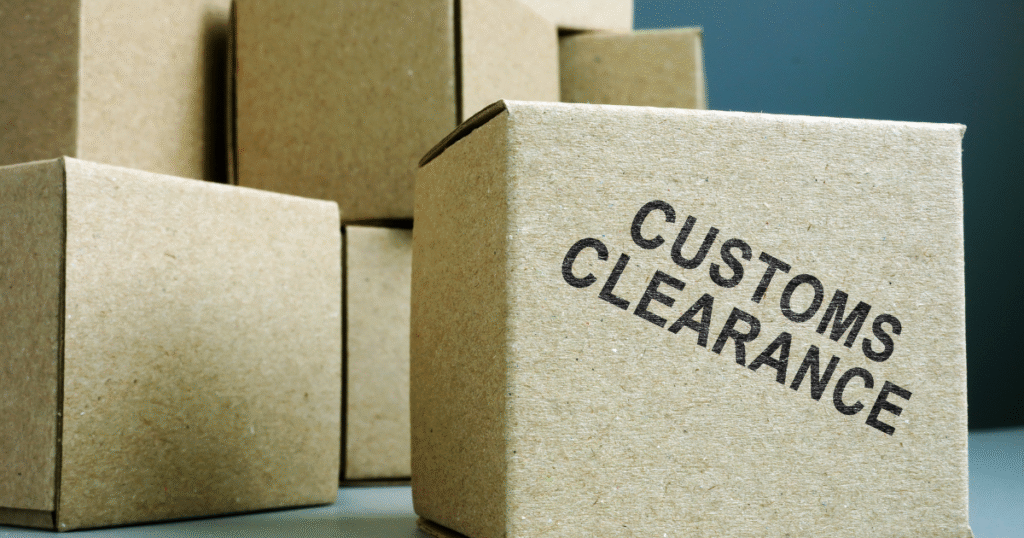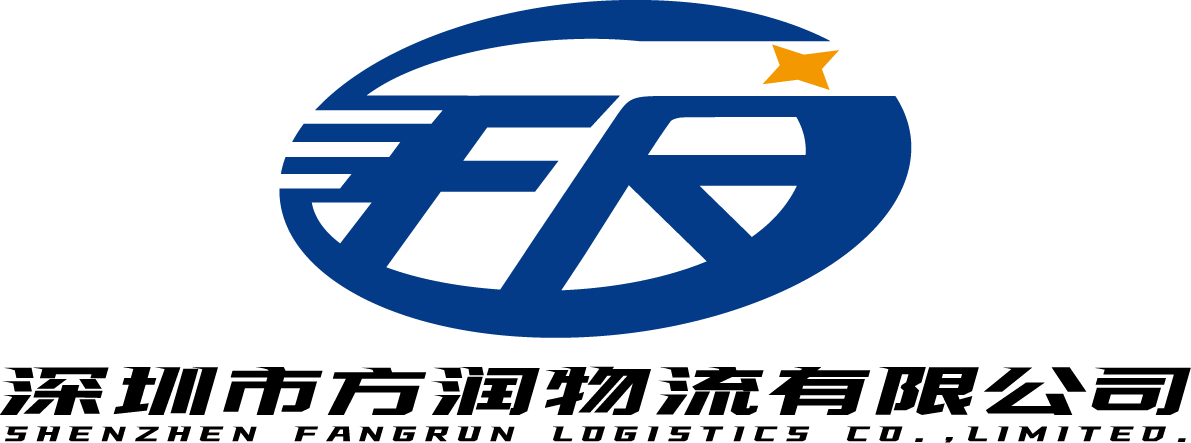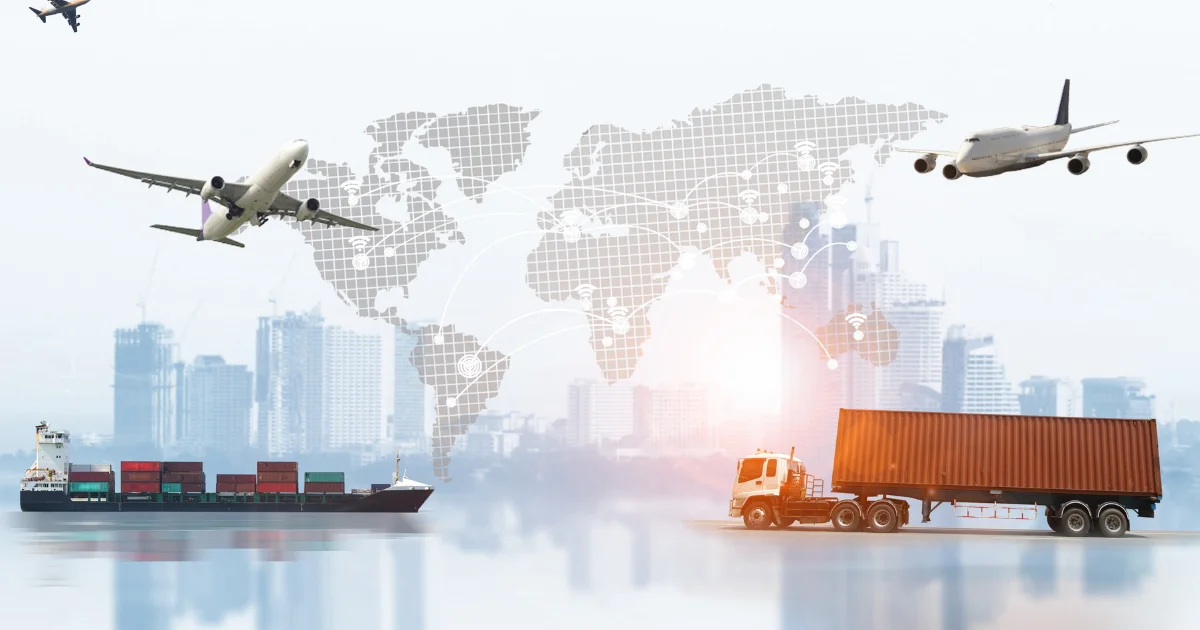Bangladesh’s economy quite literally runs on wheels, wings, and waves. Why? Because the China-Bangladesh trade route is nothing less than a lifeline, especially for the country’s powerhouse Ready-Made Garment (RMG) industry. From zippers and fabrics to high-tech machinery, most of it comes from China. Without smooth and reliable transportation logistics, the production line slows down, deadlines slip, and export orders get messy. And in a fast-moving global market, that’s a nightmare no business wants.
Here’s the challenge: how do you strike the perfect balance between saving money and saving time? Air freight gets your shipment from Shanghai to Dhaka in a flash—but at a hefty price. Sea freight is cheaper but slower, sometimes too slow for tight production schedules. Road and rail links? Emerging, but often complicated. Businesses often find themselves caught in this tug-of-war: cut costs and risk delays, or pay more to keep things moving.
That’s where this guide comes in. We’re going to break down the options, show you how each mode of transportation fits into the bigger picture, and—most importantly—give you strategies to optimize your supply chain. Whether you’re a seasoned logistics manager or a business owner just stepping into global trade, you’ll walk away knowing how to shave days off your transit time while keeping your shipping costs in check.
Core Transport Modes: The Time vs. Cost Trade-Off
When it comes to transportation logistics between China and Bangladesh, the real tug-of-war always boils down to one thing: time vs. cost. Do you save money and risk waiting, or do you pay more and get it fast? Let’s break it down with the two heavyweights of global trade—ocean freight and air freight.
🌊 Ocean Freight: The Cost-Effective Logistics Champion
If saving money is your number one priority, ocean freight is your best friend. It’s the undisputed MVP of cost-effective logistics, especially when you’re moving massive loads of fabric rolls, machinery, or containers of finished goods.
✅ Pros:
◉ Lowest cost per unit—ideal for high-volume or heavy cargo.
◉ Perfect for non-urgent, steady inventory flow.
◉ Gives you the option of FCL (Full Container Load), which maximizes savings.
❌ Cons:
◉ Slowest transit time—typically 18–25 days from major Chinese ports to Chattogram.
◉ Vulnerable to port congestion and customs delays (and let’s be honest, if you’ve ever waited for clearance at Chattogram Port, you know how “fun” that can be).
◉ LCL (Less than Container Load) can be cost-effective for small shipments, but delays pile up since your cargo shares space with others.
💡 Pro Tip (Volume Strategy): If you can fill a container (FCL), do it—it not only saves money but also reduces delays compared to LCL, where your goods depend on the schedules of other shippers.
✈️ Air Freight: The Speed Solution
Now, if time is money for your business—and let’s face it, in the RMG sector, late shipments can cost you contracts—then air freight is your go-to. Think of it as the express lane in transportation logistics.
✅ Pros:
◉ Fastest transit time—3–7 days door-to-door.
◉ Critical for strict deadlines or urgent replenishment.
◉ Best for high-value, lightweight goods or seasonal must-haves (like fashion items for holidays).
◉ More reliable schedules, less vulnerable to port bottlenecks.
❌ Cons:
◉ Highest cost, often several times more expensive than sea freight.
◉ Limited by weight and volume, which makes it less practical for bulky shipments.
🚀 Best Use: Air freight shines when you’re moving samples, emergency stock, or time-sensitive components. For example, when garment factories in Dhaka are scrambling to deliver Christmas orders to European buyers, those last-minute zippers and trims often fly in by air to save the day.
✈️ Air Freight vs. 🚢 Sea Freight: China–Bangladesh Trade-Off
| Factor | Air Freight (Aviation Transport) | Sea Freight (Ocean Transport) |
|---|---|---|
| Transit Time | ⏱️ 3–7 days (fastest option) | 🐢 18–25 days (slowest mode) |
| Cost | 💸 Highest (up to 10x more than sea) | 💰 Lowest per unit (especially FCL) |
| Best For | High-value, low-volume, urgent goods (pharma, electronics, fashion samples) | Heavy, bulky, or high-volume shipments (machinery, garments, raw materials) |
| Capacity | Limited by aircraft size/weight | Massive — thousands of containers per ship |
| Reliability | Very reliable schedules; minimal weather delays | Prone to port congestion, customs delays, and weather disruptions |
| Flexibility | Great for emergency or seasonal surges | Great for stable, predictable inventory flow |
| Environmental Impact | 🌍 High carbon footprint per ton-mile | 🌱 More fuel-efficient, greener per ton-mile |
| Key Trade-Off | Speed over cost | Cost savings over speed |
👉 Quick takeaway for businesses:
◉ If you’re racing against deadlines (holiday orders, emergency stock), air freight is your lifeline.
◉ If you’re managing steady supply chains and want to stretch your budget, sea freight is your champion.
👉 Bottom Line: If you’re shipping steady, predictable inventory, ocean freight keeps your costs low. If you’re battling deadlines, air freight buys you time (at a price). The smartest businesses often mix both modes, using sea for bulk stock and air for urgent top-ups—balancing cost and speed like pros.
Most Common Mode of Freight Transportation: The Ultimate Guide
🚢 Strategic Route and Port Selection (Time Optimization)
Here’s a secret in transportation logistics that many businesses overlook: sometimes, the biggest time-saver isn’t the mode of transport—it’s the route you choose and the port you use. Think of it like commuting. Sure, you can take the highway every day, but if there’s a shortcut through backroads that avoids rush-hour gridlock, you’ll get home faster (and maybe even smug about it). The same applies to global shipping.
🔄 Transshipment vs. Direct Services
Most cargo traveling from China to Bangladesh doesn’t go in a straight line. Instead, it makes a pit stop—usually at big hub ports like Singapore or Colombo—for transshipment. This adds time (sometimes 3–7 extra days) but keeps costs lower.
But here’s the kicker: a handful of carriers offer direct or express services to Chattogram. They’ll shave days off your schedule, but they charge a premium. It’s like booking a nonstop flight versus one with two layovers—you pay more, but you arrive fresher (and with less jet lag on your cargo).
💡 Pro Tip: Use direct services when your deadlines are tight—like when you need to hit factory production schedules for seasonal orders. For routine shipments, transshipment is fine.
🏭 Optimizing Chinese Origin Ports
Another hidden time trap? Picking the wrong origin port in China. With its vast geography, trucking cargo across the country can add unnecessary delays and costs.
◉ Shanghai & Ningbo: Best for suppliers in Eastern China.
◉ Shenzhen: Perfect for Southern China and Guangdong province factories.
◉ Qingdao: The go-to for Northern China.
By aligning your supplier location with the nearest export port, you cut down on domestic trucking time (and save on inland haulage fees). It’s like ordering pizza from the closest shop instead of one three towns over—same product, faster delivery.
⚓ Bangladesh Port Strategy
Chattogram Port is the workhorse of Bangladesh, handling nearly 90% of the country’s trade. For most businesses, this is the standard option. But heavy reliance comes at a price: congestion, especially during peak export seasons (looking at you, pre-Eid and Christmas rush).
Enter Mongla Port. While it’s smaller and less connected, it can act as a pressure-release valve when Chattogram is jammed. Forward-thinking shippers are already using it strategically to avoid costly delays.
🚛 Inland Connectivity: ICDs in Dhaka
Here’s something that often flies under the radar: Inland Container Depots (ICDs) in Dhaka. These facilities allow customs clearance to happen inland rather than bottlenecking at Chattogram Port. The result? Reduced dwell time, faster delivery to your factory or warehouse, and less stress.
For garment manufacturers racing against tight lead times, this is a game-changer. Instead of waiting days for clearance at the coast, your goods can roll into Dhaka and get green-lighted closer to home base.
👉 Bottom Line: In global transportation logistics, smart port and route choices can save you days, sometimes weeks, in transit. That’s the difference between meeting a client deadline and scrambling to explain delays. By mixing strategies—choosing the right Chinese origin port, leveraging direct services, exploring Mongla as a backup, and using ICDs—you don’t just move cargo. You move smarter.
Mastering Documentation and Customs Clearance (Saving Time and Money)

Let’s be real—when it comes to transportation logistics between China and Bangladesh, customs clearance is often where the clock stops ticking and the bills start piling up. Many businesses think the “shipping” part is where the delays happen, but in reality, it’s the paperwork bottleneck at Chattogram (and sometimes at Mongla) that can eat away your profit margins.
Think of customs like airport security. If your documents aren’t in order, you’re not boarding that flight—except here, instead of missing a holiday, you’re racking up thousands in demurrage and detention charges.
1. Accurate HS Codes and Valuation
This is non-negotiable. HS Codes (Harmonized System Codes) tell customs exactly what your product is, and if you misdeclare—whether by accident or strategy—you’re asking for trouble. Incorrect HS Codes or undervaluing goods might seem like a shortcut, but the “shortcut” often leads to weeks of delays, hefty fines, and your cargo sitting idle in a container yard.
👉 Pro tip: Always double-check with your freight forwarder or customs broker. A five-minute review can save five weeks of headaches.
2. Critical Paperwork You Can’t Afford to Mess Up
The holy trinity (well, technically four) of customs clearance:
◉ Bill of Lading – Proof of shipment, your cargo’s passport.
◉ Commercial Invoice – The financial DNA of your goods.
◉ Packing List – Detailed breakdown of what’s inside.
◉ Certificate of Origin – Confirms where the goods are manufactured, crucial for trade agreements.
One missing digit, one typo, or one mismatched figure between documents, and customs will grind everything to a halt.
3. Preventing Demurrage & Detention Nightmares
Delays at customs don’t just mean wasted time—they mean sky-high costs. Demurrage fees (when your container sits too long at the port) and detention fees (when you hold on to equipment longer than agreed) can snowball fast.
👉 The smart move: Work closely with your freight forwarder to pre-file documentation before your vessel even arrives. That way, when your container hits Chattogram or Mongla, it’s ready to move instead of sitting like a forgotten suitcase at baggage claim.
4. Leveraging AEO (Authorized Economic Operator) Status
If you’re shipping regularly, consider partnering with or becoming an Authorized Economic Operator (AEO). This program rewards companies with a clean compliance record by giving them priority customs clearance. Translation? Faster approvals, fewer inspections, and way less red tape. For high-volume importers in Bangladesh, AEO can be a total game-changer.
🔥 Bottom line: Mastering documentation isn’t paperwork—it’s profit work. Every error avoided, every form correctly filled, every document filed on time is money saved and days shaved off your supply chain. In a market where margins are razor-thin and deadlines are brutal, customs efficiency isn’t optional—it’s survival.
Advanced Cost Reduction Strategies (Money Optimization)
Shipping between China and Bangladesh isn’t just about moving goods—it’s about moving them smartly. With rising fuel prices, congested ports, and ever-tightening margins in the RMG supply chain, shaving costs in transportation logistics isn’t a luxury—it’s survival. The good news? With the right strategies, you can stop overpaying and start optimizing every container that leaves China.
1. Freight Consolidation: Strength in Numbers
If you’re still paying LCL (Less than Container Load) rates for small shipments, you’re leaving money on the table. LCL means higher handling fees, slower movement, and way more exposure to delays.
👉 Smart play: Combine smaller orders from multiple suppliers in China into one FCL (Full Container Load). Not only do you save on per-unit costs, but you also cut down on handling headaches. For Dhaka-based garment factories, this can mean thousands saved per month.
2. Incoterms Negotiation: Take Control of the Wheel
Too many importers simply accept CIF (Cost, Insurance & Freight) because that’s what the supplier offers. Big mistake. With CIF, you’re stuck with the supplier’s chosen carrier (and rates, which are rarely in your favor).
👉 Pro tip: Negotiate FOB (Free on Board) instead. This lets you control the main freight leg, giving you the power to shop around, pick reliable carriers, and negotiate rates that are often much cheaper than what your supplier offers.
3. Utilizing Free Trade Agreements (FTAs): The Duty-Free Jackpot
Bangladesh’s trade relationship with China continues to evolve, with various tariff exemptions and duty reductions in place for specific goods. But here’s the catch—you don’t automatically get those benefits.
👉 The key: Secure the Certificate of Origin and other required paperwork to prove eligibility under FTAs. Done right, this can slice thousands off your landed costs, especially on high-value raw materials and machinery imports.
4. Insurance Strategy: Protect Today, Save Tomorrow
Many shippers skip on proper cargo insurance, thinking it’s an unnecessary expense. But one lost container—or even one water-damaged shipment—can wipe out months of profit.
👉 Best move: Get comprehensive freight insurance tailored to your cargo type. It’s not just protection, it’s cost optimization. Why? Because recovering quickly from loss or damage keeps your production line running and prevents expensive emergency shipments later.
FOB vs. CIF: Which One Saves You More?
| Aspect | FOB (Free on Board) | CIF (Cost, Insurance & Freight) |
|---|---|---|
| Who Controls Freight Rates? | Buyer – you choose the carrier, negotiate rates, and often get cheaper deals. | Seller – you’re stuck with the supplier’s chosen carrier (usually more expensive). |
| Transparency of Costs | Clear breakdown of costs (freight, insurance, customs). | Costs are bundled, often with hidden markups. |
| Flexibility | Full control to pick faster or cheaper routes based on urgency. | Limited – supplier decides and may not prioritize your deadlines. |
| Risk Management | Buyer can choose comprehensive insurance tailored to cargo. | Supplier arranges insurance (coverage may be minimal or insufficient). |
| Customs & Documentation | Buyer handles main carriage, ensuring correct paperwork. | Supplier handles, but errors can cause delays at destination. |
| Best For | Cost-conscious businesses, frequent shippers, those needing speed & reliability. | First-time shippers, low-volume importers, or those who prefer less involvement. |
👉 Takeaway: If you want cost savings + control, go with FOB. If you’d rather let your supplier take the wheel (and possibly overcharge you), then CIF might work.
🔥 Final Word: Cost reduction in global shipping isn’t about cutting corners—it’s about playing smarter. From consolidating shipments to leveraging trade agreements and insurance, these tactics can make the difference between scraping by and thriving in Bangladesh’s hyper-competitive RMG-driven economy.
Conclusion
When it comes to moving goods between China and Bangladesh, the smartest companies don’t put all their eggs in one basket—or in this case, one container. Instead, they master a multimodal strategy: leveraging the cost-efficiency of sea freight for steady, large-scale inventory while keeping air freight in their back pocket for urgent, high-value, or time-sensitive shipments. This balance ensures both savings and speed.
Actionable Takeaway
Think of transportation logistics not as a fixed overhead, but as a strategic lever. Done right, it doesn’t just save money—it builds resilience, strengthens supply chain reliability, and enhances your brand’s reputation for on-time delivery. In today’s hyper-competitive trade landscape, logistics can be the difference between thriving and barely surviving.
Your Next Step
If you’re ready to cut costs, save time, and supercharge your supply chain, reach out to FR Logistics. Our experts specialize in crafting tailored logistics solutions that keep your cargo moving smoothly from China to Bangladesh—and beyond.
📩 Contact FR Logistics today for a consultation and take the guesswork out of your freight strategy.








